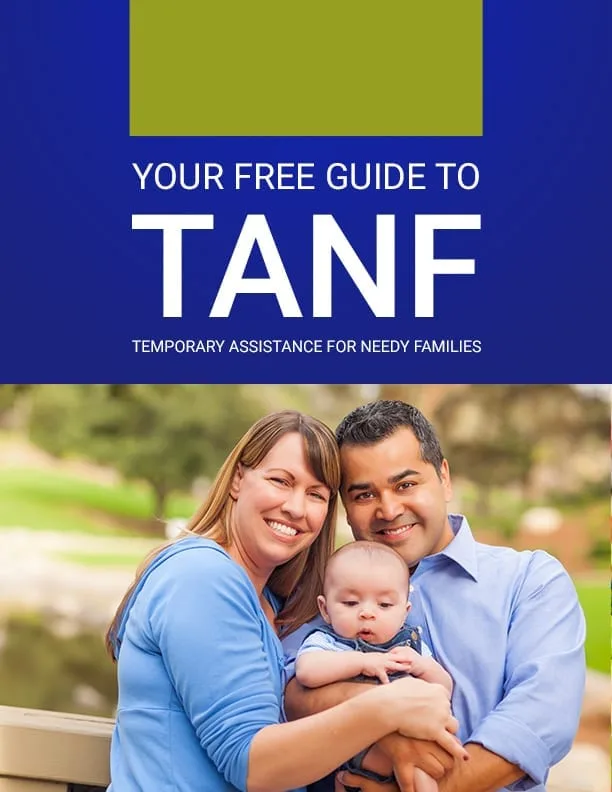Your Free Guide to Debt Relief Strategies
Your Free Guide to Debt Relief Strategies
We are privately owned and not affiliated with the government in any way or form.

Introduction
Debt can be a heavy burden, impacting not only your financial health but also your mental and emotional well-being. Debt relief is a concept that many seek to understand and achieve, yet it can often seem elusive and complicated. This guide aims to demystify debt relief, providing you with an understanding of what it means, why it’s important, and the various strategies available to help you achieve it.
Debt relief refers to the partial or total forgiveness of debt, or the slowing or stopping of debt growth, granted by the lender to the borrower. It encompasses a range of strategies designed to reduce, restructure, or eliminate debt. The purpose of debt relief is to help individuals regain financial stability, reduce stress, and improve their overall quality of life. Anyone struggling with debt, from overwhelming credit card balances to unmanageable student loans, can benefit from exploring debt relief options.
Understanding Debt
Debt is money borrowed by one party from another, typically under the agreement that it will be repaid with interest. Understanding the different types of debt is crucial as each type has its own characteristics and implications for debt relief.
Secured Debt
This type of debt is backed by collateral, meaning if you fail to repay the loan, the lender can seize the asset. Common examples include mortgages and auto loans. Mortgages are loans taken to purchase real estate, where the property itself serves as collateral. Auto loans work similarly, with the vehicle being the collateral.
Unsecured Debt
Unlike secured debt, unsecured debt does not involve collateral. This means the lender cannot automatically seize your property if you default. Credit card debt is the most common form of unsecured debt, characterized by high interest rates and revolving balances. Medical bills, often resulting from unexpected health issues, and personal loans, which are loans for personal use without specific collateral, also fall into this category.
Student Loans
These are loans specifically designed to cover educational expenses. They can be either federal or private, each with different terms and repayment options.
Payday Loans
Short-term, high-interest loans intended to bridge the borrower until their next paycheck. These loans can trap borrowers in a cycle of debt due to their high costs and quick repayment terms. Typically, these loans are small-dollar amounts, ranging from $100 to $1,000, and are intended to be repaid within a short period, usually two weeks to a month.
Payday loans come with extremely high interest rates, which can translate to annual percentage rates (APRs) of 300% to 500% or more. For example, a $300 loan with a $45 fee for a two-week period has an APR of 391%.
Tax Debt
This is the debt owed to federal, state, or local tax authorities. Failure to pay taxes can result in significant penalties and interest.
The Importance of Debt Relief
Addressing debt is critical for maintaining financial health, mental well-being, and economic stability.
Financial Health
Managing and reducing debt positively impacts your credit score, which is a key factor in determining your ability to borrow money in the future. A higher credit score can lead to better loan terms and lower interest rates. Additionally, reducing debt means less money spent on interest payments, which can result in significant savings over time.
Mental and Emotional Well-being
Debt can be a major source of stress, leading to anxiety, depression, and other mental health issues. Achieving debt relief can significantly reduce this stress, leading to a better quality of life and improved overall health.
Economic Stability
When you are not burdened by debt, you have more disposable income to spend on necessities and leisure activities, which contributes to a more stable and balanced economy. Additionally, being free of debt enables you to save and invest for the future, securing your financial stability in the long term.
Common Debt Relief Strategies
There are several strategies available to help manage and reduce debt, each with its own advantages and disadvantages.
Debt Consolidation
Debt consolidation is a financial strategy that involves combining multiple debts into a single loan or repayment plan. This approach aims to simplify repayment by merging various debts, such as credit card balances, personal loans, and other liabilities, into one manageable monthly payment. Often, the new loan comes with a lower interest rate compared to the rates on the individual debts, which can reduce the total amount of interest paid over time.
How Debt Consolidation Works
- u003cstrongu003eConsolidation Loans: u003c/strongu003eBorrowers take out a new loan that is used to pay off their existing debts. The borrower then makes a single monthly payment on the consolidation loan.
- u003cstrongu003eBalance Transfer Credit Cards:u003c/strongu003e Some borrowers use balance transfer credit cards, which offer a low or 0% introductory interest rate for a certain period. The borrower transfers existing credit card balances to the new card and pays off the debt within the promotional period to avoid high interest charges.
- u003cstrongu003eDebt Management Plans:u003c/strongu003e Nonprofit credit counseling agencies can help borrowers set up a debt management plan (DMP). The agency negotiates with creditors to lower interest rates and consolidate payments into one monthly sum, which the borrower pays to the agency, and the agency disburses the payments to the creditors.
Debt Settlement

Debt settlement is a financial strategy where borrowers negotiate with creditors to reduce the total amount of debt owed. This approach is typically used when borrowers are experiencing significant financial hardship and cannot make their full debt payments. The goal is to reach an agreement with creditors to pay a lump sum that is less than the total outstanding balance, effectively settling the debt for a reduced amount.
How Debt Settlement Works
- Assess Financial Situation: Borrowers must first evaluate their financial situation to determine if debt settlement is a viable option. This often involves reviewing all outstanding debts, income, and expenses.
- Contact Creditors: Borrowers or a debt settlement company will contact creditors to propose a settlement. This negotiation process involves offering a lump sum payment that is less than the total amount owed.
- Negotiate Terms: Creditors may accept, reject, or counter the settlement offer. The negotiation process can take time, and borrowers may need to provide evidence of financial hardship.
- Settle the Debt: If an agreement is reached, the borrower pays the agreed-upon lump sum to settle the debt. The creditor then forgives the remaining balance.
Credit Counseling
Credit counseling agencies provide services to help individuals manage their debt, improve their financial literacy, and develop plans to repay their debts. These agencies offer personalized guidance and support, helping clients to regain control over their finances and avoid future debt problems. Credit counseling can be an effective first step for those struggling with debt but not yet in severe financial distress.
How Credit Counseling Works
- Initial Consultation: The process begins with an initial consultation, usually free of charge, where a credit counselor reviews the client’s financial situation, including income, expenses, debts, and credit report.
- Budgeting Assistance: Counselors help clients create a realistic budget, identifying areas where they can cut expenses and allocate more funds towards debt repayment.
- Debt Management Plan (DMP): For clients with significant debt, the counselor may recommend a Debt Management Plan. Under a DMP, the agency negotiates with creditors to lower interest rates, waive fees, and consolidate payments into one monthly sum.
- Financial Education: Credit counseling agencies provide educational resources and workshops on topics like budgeting, saving, and credit management to help clients develop better financial habits.
Bankruptcy
Bankruptcy is a legal process that provides individuals and businesses overwhelmed by debt with a means to either discharge or restructure their obligations under the protection of the court. This process is designed to offer a fresh financial start for debtors who cannot repay their debts, while ensuring fair treatment of creditors. There are different types of bankruptcy filings, but the most common for individuals are Chapter 7 and Chapter 13.
Types of Bankruptcy
- Chapter 7 Bankruptcy:
- Liquidation: Chapter 7 is often referred to as “liquidation bankruptcy.” In this process, a court-appointed trustee oversees the sale of the debtor’s non-exempt assets. The proceeds are used to pay off creditors.
- Discharge of Debts: After the liquidation, most remaining unsecured debts, such as credit card debt, medical bills, and personal loans, are discharged, meaning the debtor is no longer legally obligated to pay them.
- Eligibility: To qualify for Chapter 7, debtors must pass a means test, which evaluates their income and expenses to determine if they have the means to repay their debts. Those with higher incomes may be required to file under Chapter 13 instead.
- Impact on Assets: While some assets are exempt from liquidation (e.g., certain amounts of home equity, personal property, and retirement accounts), non-exempt assets, such as luxury items, second homes, or valuable collections, may be sold.
- Chapter 13 Bankruptcy:
- Repayment Plan: Chapter 13, known as “reorganization bankruptcy,” allows debtors to keep their assets and repay their debts over three to five years according to a court-approved repayment plan.
- Debt Adjustment: Under this plan, debtors make regular payments to a trustee, who distributes the funds to creditors. The plan typically reduces the total debt amount and interest rates.
- Eligibility: Chapter 13 is available to individuals with a regular income who do not pass the means test for Chapter 7 or who prefer to keep their assets. There are also limits on the amount of secured and unsecured debt.
- Protection of Assets: Debtors can retain their property, including homes and cars, as long as they continue making payments under the repayment plan.
Debt Management Plans
These are formal agreements between you and your creditors, often facilitated by a credit counseling agency, to pay back your debt over time with reduced interest rates and fees. While it can be an effective way to manage debt, it requires strict adherence to the repayment plan.
Tips for Achieving Debt Relief

Achieving debt relief requires careful planning and disciplined execution. Here is a step-by-step guide to help you navigate this process.
Assessing Your Debt Situation
Begin by listing all your debts, including the amounts owed, interest rates, and minimum monthly payments. This will give you a clear picture of your total debt and help you prioritize which debts to address first.
Setting Financial Goals
Establish both short-term and long-term financial goals. Short-term goals might include paying off a high-interest credit card, while long-term goals could involve saving for retirement or buying a home. Setting realistic timelines for these goals is essential for maintaining motivation and tracking progress.
Budgeting
Creating a budget is crucial for managing your finances and freeing up money to pay off debt. Start by tracking all your income and expenses to identify areas where you can cut costs. Prioritize essential expenses and allocate a portion of your income toward debt repayment.
Choosing a Debt Relief Strategy
Evaluate the different debt relief options available and choose the one that best fits your situation. Consider factors such as the types of debt you have, your credit score, and your ability to make monthly payments. Consulting with a financial advisor or credit counselor can help you make an informed decision.
Implementing Your Plan
Once you have chosen a debt relief strategy, take actionable steps to implement it. This might involve consolidating your debt, negotiating with creditors, or enrolling in a debt management plan. Staying disciplined and sticking to your plan is critical for achieving success.
Monitoring Progress
Regularly review your debt relief plan to ensure you are on track. Make adjustments as needed based on changes in your financial situation or unexpected expenses. Celebrate your progress along the way to stay motivated and committed to your goals.
Strategies for Handling Debt Relief
Achieving debt relief requires not only a solid plan but also practical tips and resources to support you along the way.
Practical Tips:
- u003cstrongu003ePrioritize High-Interest Debt:Use Windfalls Wisely:u003c/strongu003e Apply any unexpected income, such as bonuses or tax refunds, toward your debt to make faster progress. Focus on paying off debts with the highest interest rates first to save money on interest payments.
- u003c/trongu003eAvoid New Debt:u003c/strongu003e Resist the temptation to take on new debt while you are working to pay off existing debt.
- u003cstrongu003eUse Windfalls Wisely:u003c/strongu003e Apply any unexpected income, such as bonuses or tax refunds, toward your debt to make faster progress.
Conclusion
In summary, achieving debt relief is a multifaceted process that involves understanding your debt, exploring various relief strategies, and implementing a well-thought-out plan. By taking control of your finances, setting realistic goals, and utilizing available resources, you can successfully navigate the path to debt relief and secure a more stable and prosperous financial future. Stay committed to your plan, monitor your progress, and remember that the benefits of being debt-free extend far beyond just financial health—they encompass improved well-being and a brighter outlook on life.







